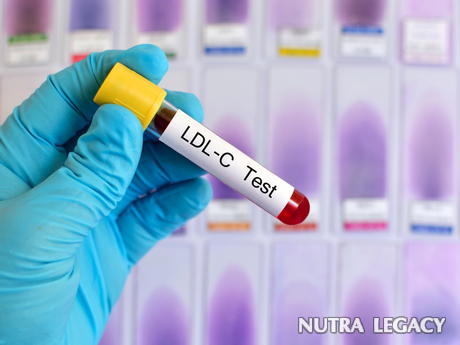What are Low Density Lipoproteins (LDL)?

- There are three groups of cholesterol: LDL cholesterol, HDL cholesterol and triglycerides
- Cholesterol is a fat-like, waxy substance found in most animal products. Our body needs cholesterol to produce hormones and to manufacture Vitamin D
- When cholesterol is left in our arteries, it can lead to artery plaque, poor blood circulation, blood clots and a heart attack
- Causes of high LDL: being overweight, genetics and being overweight
Understanding our cholesterol numbers can be a challenge. Generally, the physician will tell you a total cholesterol number, as well as three other sub-numbers. These three groups are the high density lipoproteins (HDL), low density lipoproteins (LDL), and the triglycerides. While you want to increase your HDL (sometimes known as good cholesterol), you need to keep lowering your low density lipoproteins and triglycerides. The question is what exactly are low density lipoproteins in the first place.
What is LDL?
Before we can discuss low density lipoproteins, we have to understand cholesterol. Basically, cholesterol is a fat-like, waxy substance found in most animal products. Our bodies need cholesterol in order to produce hormones and to manufacture Vitamin D. The cholesterol we need is transported through our bodies on these lipoproteins.
While medical researchers are not completely clear on how the entire system works, they believe HDL lipoproteins are good because they can take the extra cholesterol our cells and body do not need and return it to the liver where it can be removed from our bodies. On the other hand, low density lipoproteins seem to carry the cholesterol towards our arteries. When the cholesterol is left in our arteries, it can build up and that can reduce our blood circulation. Over time, the cholesterol can harden into plaque which narrows the passage and decreases flexibility. This is a condition commonly known as atherosclerosis.
The reason physicians worry about low density lipoproteins and the atherosclerosis they can cause is that if a blood clot were to get stuck in those narrowed arteries this could cause a heart attack or a stroke.
Causes of High LDL
If your doctor informed you that your low density lipoproteins were too high (usually anything over 130 mg/dL), you may be wondering what caused this high level in the first place. And there are a number of reasons.
The most controllable reasons are related to our lifestyles. Eating high levels of saturated fat (fried foods, for example) is going to increase the amount of cholesterol and LDL in our bodies. In fact, being overweight will usually be a cause of high levels of low density lipoproteins. Being inactive can also play a role.
However, these are not the only causes. Age is a factor, too. The older we get the higher our LDL levels tend to become. In women, for example, the levels jump after menopause. Our genetics also plays a role. Research suggests that high cholesterol levels seem to be passed on in families. Diabetes, certain medications, and other medical problems can also be factors in your level of low density lipoproteins.
Improving the Numbers
If you’re worried about your low density lipoproteins, there are things you can do right now to lower them. Losing weight and exercising more are two good ways to start. You can also change your diet. Instead of eating so much saturated fat, get the fat your body needs from better sources, such as avocados, walnuts, fish, and olive oil. For very high levels of low density lipoproteins (above 160 mg/dL), your doctor may prescribe medication in addition to these lifestyle changes.
The information supplied in this article is not to be considered as medical advice and is for educational purposes only.
|
One Response to “What are Low Density Lipoproteins (LDL)?” | ||||||||||||||





 16 Nov 2008
16 Nov 2008
At what point to the levels of LDL cholesterol become dangerous? I'm worried that I have reached this point already and I'm scared to go for tests. What numbers are supposed to be "normal"?February 3rd, 2011 at 5:52 am